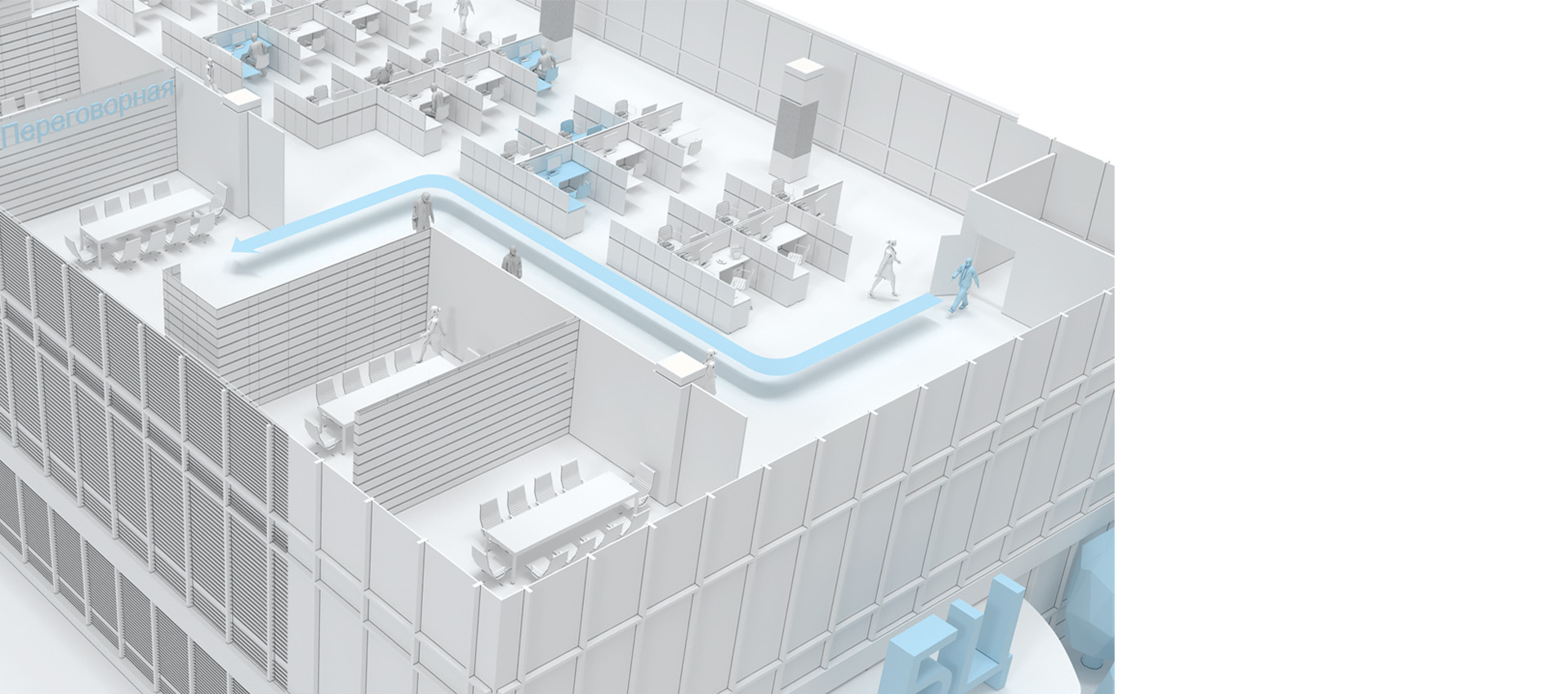
Office navigation
It can be difficult to navigate in an office, especially if the building is large or contains many floors. Navigation can simplify this process and save time.
Indoor positioning helps visitors quickly find the right spaces, such as meeting rooms, offices, toilets, kitchens, elevators and other facilities inside the building, and can also indicate emergency exits, which is important for safety in case of emergencies.
The INP indoor positioning system can also increase the efficiency of employees and reduce the time spent searching for the right information or other employees. This can help business centers increase their productivity and improve overall operational efficiency.
The main advantage of office center navigation systems is to improve the experience of visitors and employees, who can quickly and easily find the right rooms and devices inside the building.
The convenience and comfort of interacting with the business center is increased, the overall impression of visitors and employees is improved, as well as their loyalty level is increased.
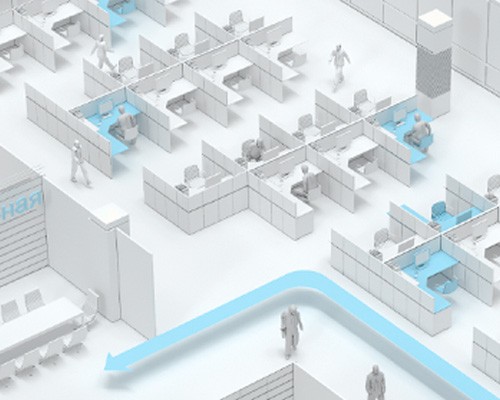
Digitalization of the office center provides many advantages and opportunities to increase the efficiency and comfort of employees, improve conditions for customers and tenants, as well as optimize business processes and office resource management.
Improved communication and collaboration: Digital tools and applications allow employees to quickly and conveniently share information, coordinate their actions, and work in real time, which contributes to increased efficiency and speed in completing tasks.
Optimizing space usage: Office space management and room management automation systems allow efficient use of free space, optimize energy consumption costs and reduce room maintenance costs.
Advantages for a business center:
Improving the user experience:
Building positioning systems help users find the right place in an office space quickly and accurately. This can significantly improve their office center interaction experience and increase satisfaction.
Save time and increase productivity:
Indoor navigation systems help reduce the time spent searching for the right place in the office and allow you to focus fully on your work. Due to this, labor productivity is significantly increased and the time spent on completing work tasks is reduced.
Increased security:
In some cases, indoor navigation can help improve overall security in an office center. For example, in case of accidents or evacuations, the INP system can provide important information about evacuation routes and exits. Show on the map if someone was forgotten during the evacuation
Reducing administration costs:
Navigation systems can simplify office management and reduce the need for staff involved in organizational and administrative activities to support the functioning of the office space.
Improving the company's reputation:
Organizations that use indoor positioning navigation systems can look more modern and innovative in the eyes of visitors, which can improve their reputation and attract more potential customers.

Customer orientation in the business center
Customer orientation in the business center means that all business processes and decisions made by the center's administration are focused on the needs and desires of customers who are tenants of the premises in the center.
As part of a customer-oriented approach, the business center administration should strive to provide high-quality services. This approach involves establishing close contact with tenants and actively listening to their opinions and feedback in order to continuously improve the quality of services provided and adapt to the changing needs of customers.
Customer orientation in a business center is an important factor in attracting new tenants, retaining old ones, and increasing profitability and competitiveness in the market.
What does an office center visitor get?:
- Быстрый и удобный поиск нужного офиса. С помощью системы позиционирования в помещениях посетитель может быстро и легко найти нужный офис, зал для конференций, переговорную комнату и т.д., без необходимости тратить время на бесполезное блуждание по коридорам
- Экономия времени. Система индор навигации поможет сэкономить время посетителей, что особенно важно для тех, кто находится в офисном центре в деловой поездке или имеет жесткий график встреч
- Уменьшение стресса и усталости. Благодаря системе навигации посетители не будут теряться в офисном центре и не будут испытывать стресс от поиска нужного офиса. Это поможет им сохранить силы и концентрацию для выполнения бизнес-задач
- Место автомобиля на карте. Посетитель всегда быстро сможет быстрой найти свой автомобиль на большой парковке офисного центра и не займет чуждое по ошибке
- Геймификация процесса посещения за счет применения дополненной реальности. AR навигация в бизнес центре и виртуальные рекламно-развлекательные сервисы
- Улучшение имиджа бизнес-центра. Геоинформационная система для бизнес центра может повысить уровень сервиса, что может улучшить имидж комплекса в глазах посетителей
- Увеличение комфорта и удобства посетителей. Благодаря системе навигации посетители могут чувствовать себя более комфортно и удобно, так как им не нужно тратить время на поиск нужного зала или офиса
Digitalization of the business center
Digitalization of a business center can increase its attractiveness to tenants and customers, as well as help increase its profitability and competitiveness in the market.
Digitalization of a business center is the introduction of technological innovations and digital solutions into the office space. This includes the implementation of an interactive navigation system and automation of room management, space usage analytics and smart access control, which can improve the management of the office center, increase the efficiency of its resources and improve conditions for tenants.
Digitalization of the office center and offices not only improves the working conditions for employees, but also increases the attractiveness of the premises for tenants and improves the conditions for interacting with customers.
What the administration gets office center:
- Улучшение управления потоком посетителей. Система навигации позволяет отслеживать и анализировать движение посетителей в здании офисного комплекса, что позволяет администрации и УК более эффективно управлять потоком посетителей и обеспечить более быстрое и удобное перемещение между различными частями здания.
- Снижение расходов на обслуживание. Система позиционирования на основе цифрового двойника офиса позволяет сократить расходы на обслуживание здания, так как помогает улучшить управление потоком посетителей и оптимизировать использование пространства.
- Оптимизация использования пространства. Система навигации позволяет оптимизировать использование пространства офиса и использовать его максимально эффективно, что может повысить его рентабельность.
- Улучшение обслуживания посетителей. Система навигации помогает посетителям быстро и легко найти нужные офисы, конференц-залы и другие объекты внутри здания, что способствует повышению уровня обслуживания и удовлетворенности клиентов, позволяя им чувствовать себя более комфортно.
- Повышение безопасности. Система навигации позволяет быстро определить местонахождение посетителей в случае чрезвычайных ситуаций, что повышает безопасность здания офиса. Система отслеживания персонала в офисе повышает уровень безопасности для сотрудников и арендаторов.
- Улучшение имиджа бизнес-центра. Геоинформационная система для бизнес центра может повысить уровень сервиса, что может улучшить имидж комплекса в глазах посетителей
- Улучшение имиджа бизнес-центра. Геоинформационная система для бизнес центра может повысить уровень сервиса, что может улучшить имидж комплекса в глазах посетителей.
The relevance of the GIS implementation of the Indoors Navigation Platform
The administration and management company of an office center can benefit from the implementation of an indoor navigation system, including improved visitor flow management, space optimization, improved customer service and building security, and reduced maintenance costs.

Thematic publications on our blog
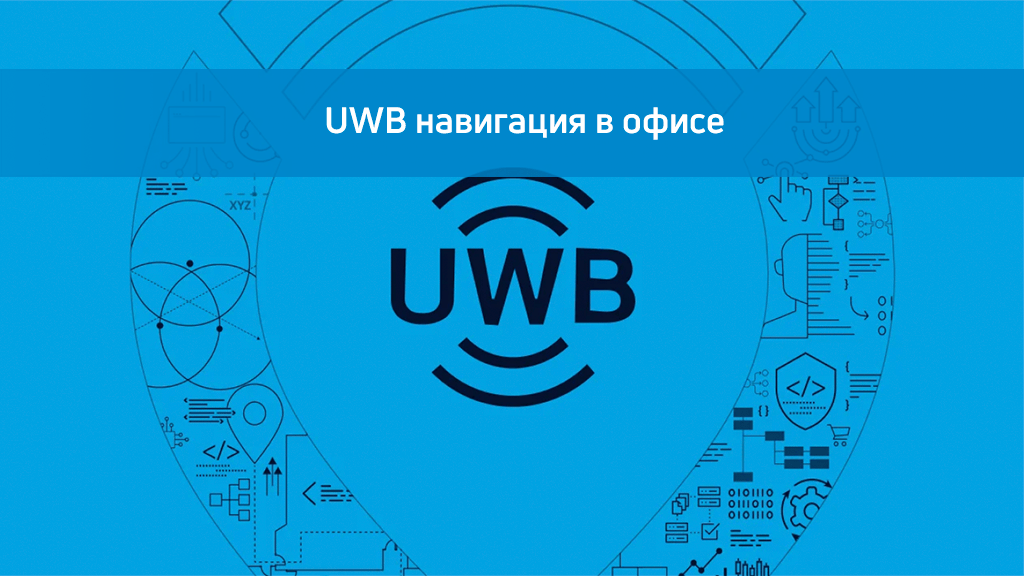
UWB office navigation
UWB навигация — это технология cверхширокополосного позиционирование (UWB-позиционирование) — одна из самых последних технологий определения положения внутри помещений, которая дает точность до 0,5 метра.
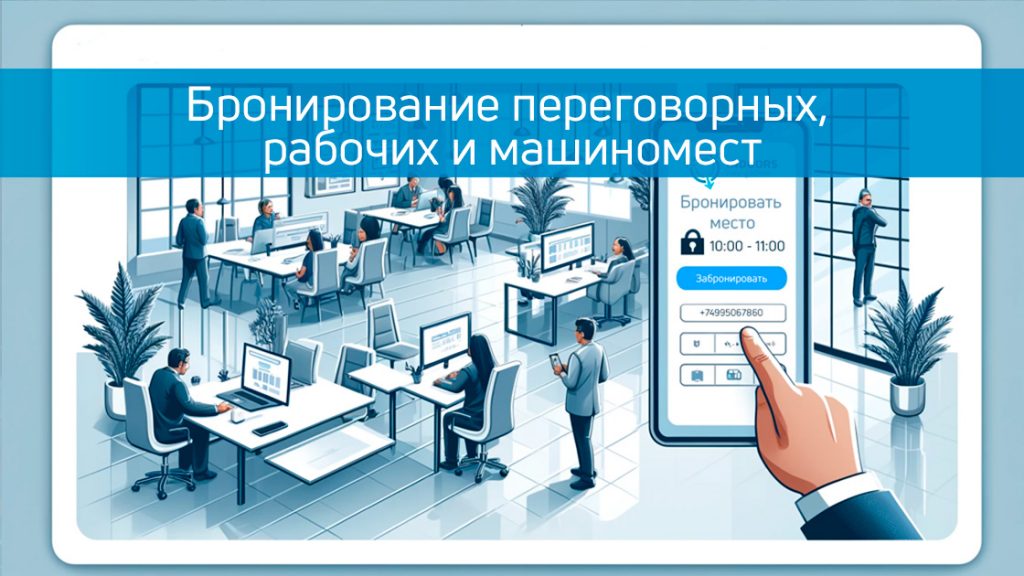
Booking meeting rooms, work spaces and parking spaces in the modern world
In today's world, where every minute counts, efficient use of office space and resources is becoming a key aspect of a successful business. Modern booking systems for meeting rooms, workstations…
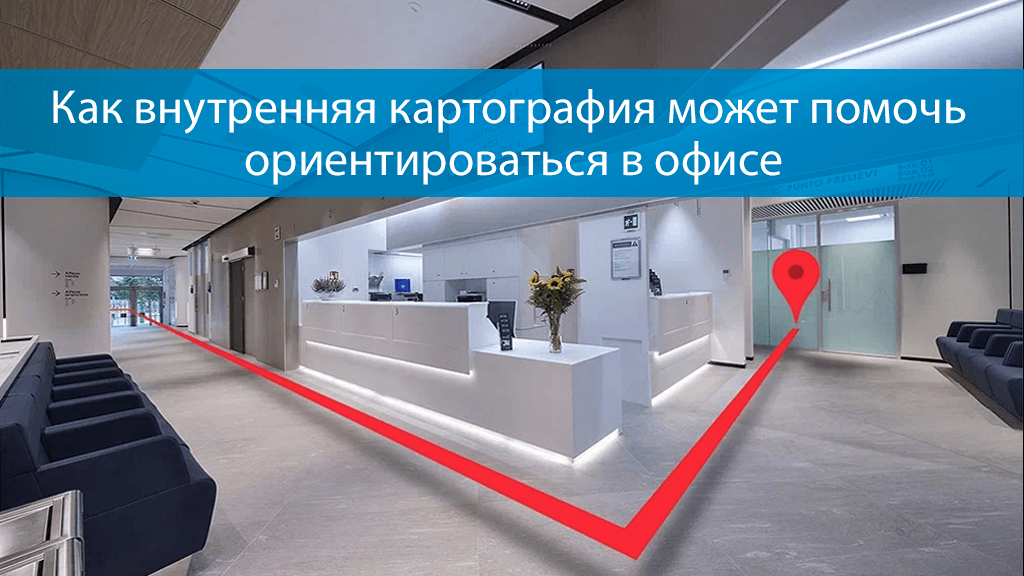
How internal cartography can help you navigate in an office
Navigating large indoor office spaces can be difficult, especially in modern large and complex buildings. If there is no correct way to navigate a large office building, your employees and…
Thematic case studies in our portfolio
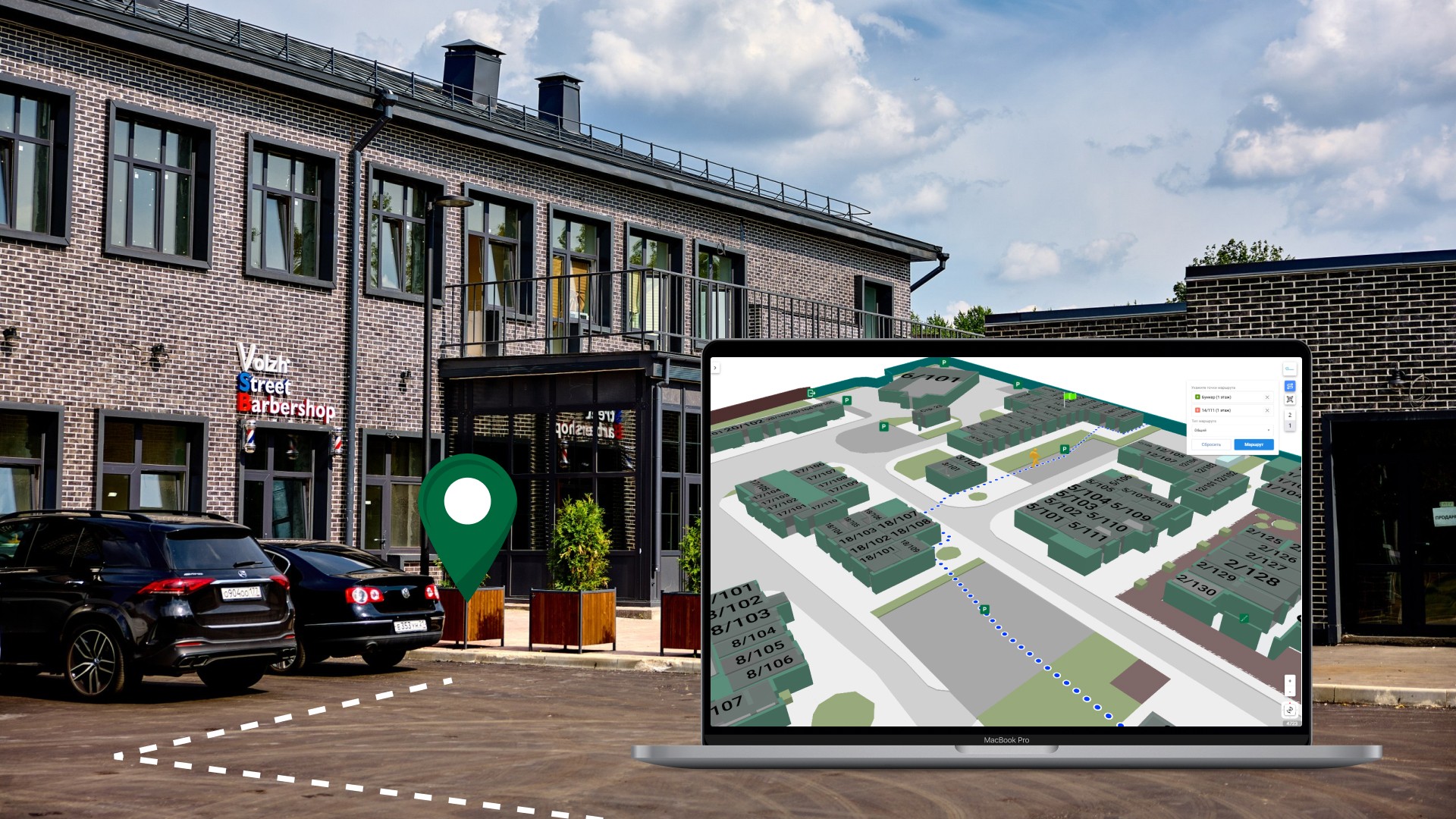

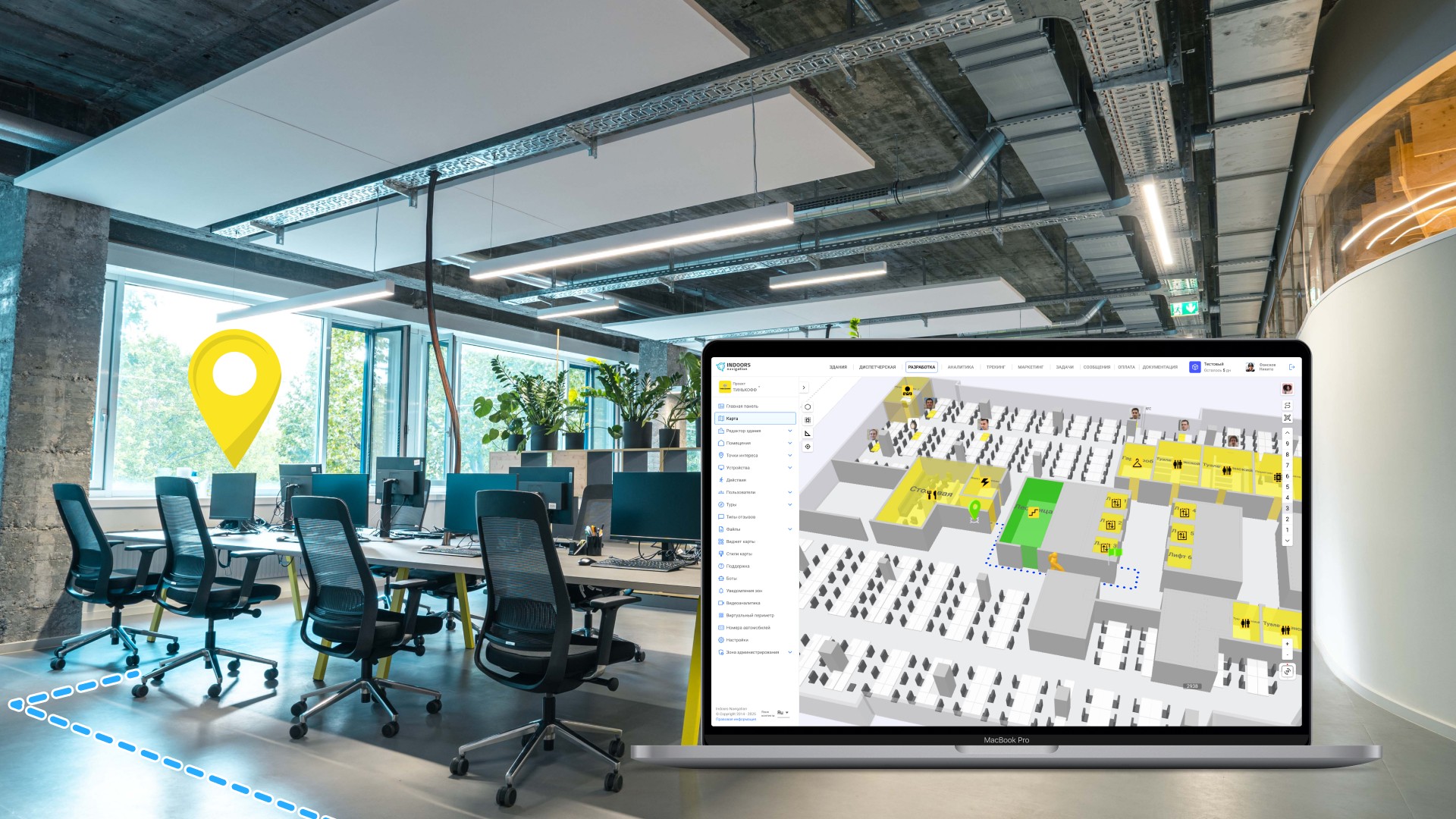
Frequently Asked Questions about Office Navigation (FAQ)
At which sites can a geographic information system (GIS) be useful for an office?
GIS and interactive indoor navigation will be useful in any large buildings where there are large flows of people, movement of tangible assets and equipment.
It can be a shopping mall or a business center, a polyclinic or a hospital, a factory or a production facility, a warehouse, a stadium or other sports facility, a concert hall, a museum, an exhibition or an expocenter, a residential complex or an IFC, an office complex or a construction site.
To learn more about the industries in which GIS and indoor navigation systems are used, please visit areas of application indoor navigation.
Can GIS and navigation be free in the office?
Of course, yes, but with limited functionality and no support. The fact is that a navigation solution is not a finished product, but a service that is constantly being refined and updated.
Therefore, after integration, it is required to analyze the behavior of visitors, collect feedback and, based on it, improve GIS — making navigation in buildings even more convenient and providing a positive user experience.
The rates can be found on the page Pricing plans after registration.
How to choose the right navigation solution for an office or Business center?
There are many different solutions for navigation in offices and business centers, so first of all it is worth paying attention to the following:
- The cost of creating an interactive map. The price is formed depending on the area of the object, the number of internal rooms and users.
- The cost of the license. Is the upgrade and support included in the license price? Where is the technical support located, and how quickly do they respond to requests?
- Making changes to the map of the object. How does map editing work, who can do it, and how much does it cost? Can your employees do this and how long does it take? Are there any instructions and lessons on working with the platform?
- Map integration. Is it easy to integrate the map into your mobile app, infomat, or website? Are there any examples of integration projects? How convenient is the documentation and in what language is it?
- Map design and customization. Is it possible to achieve the desired appearance in accordance with the corporate identity? What are the limitations and possibilities? What is the map detail?
- Additional functionality. Can the solution be modified to meet your unique requirements and how much does it cost?
- Installation. Is the solution cloud-based or boxed? Is it possible to install it on your own servers?
Why is it necessary to launch interactive navigation in your office or Business Center?
- Taking care of visitors and employees. Visitors always return to the customer-oriented company.
- Taking care of tenants. You will help them earn more, and consequently, they will be able to consistently pay your rent.
- Digitalization. The image of a modern and technological company.
- Additional earnings due to the new advertising channel: push notifications with geo-location, video ads and banners in infomats.
- An accessible and visual catalog of premises, facilities, goods and services.
- A convenient booking system for meeting rooms.
- A modern service for working with applications linked to a room card. The issue tracker.
- Extensive marketing opportunities. Manage promotions and discounts directly for tenants from your personal account.
- Extensive analytics and statistics. Analyzing the interaction between visitors and employees.
- Easy integration of the map into the mobile application, infomat and website.
How can I edit and create a map of an office or Business center on my own in the Indoors Navigation platform?
As soon as possible, we will train your employee to work independently in the control panel, create and edit interactive 3D maps, add routes and upload the required content.
No special knowledge is needed, and detailed video lessons allow you to go through the learning process even on your own and in the shortest possible time. If you have any questions, INP technical support specialists will provide free advice at your convenience.
Is it possible to start the GIS yourself and download the interactive navigation?
Yes, our geographic information system INP does not require additional design preparation before implementation. If desired, your specialists will be able to work in it without our participation and place the solution on your computing facilities.
Does navigation have voice control, audio guidance, and an audio guide?
Yes, our INP platform has integrated speech recognition and synthesis system. GIS Indoors Navigation also has an audio guide that will guide the visitor around the object, telling them how far they need to walk and where to turn.
How is the map oriented in the infomat relative to its location in the building?
In each information booth or kiosk, the map corresponds to the actual position relative to its location, if you need to go straight, then the route will be built exactly straight.
For more information, see the section Documentation.
What is interactive navigation for an office center?
Interactive navigation is, first of all, a clear and convenient map. Secondly, it is a reflection of your corporate identity and care.
Our solution combines functionality and beauty, without any limitations in terms of visual style. A large building or complex of buildings will be perceived by visitors as more technologically advanced if modern interactive indor navigation in kiosks (infomats) and mobile devices is added to the usual navigation on signs and printed maps.
Commercial properties can use the map to boost sales. Non-commercial facilities can use navigation to continuously improve the quality of their services. Shopping malls, business centers, airports, train stations, hotels, museums, amusement parks, stadiums, and even cruise ships are already using interactive navigation.
Schools, universities, hospitals and other government agencies will soon all use interactive navigation to improve the quality of the service provided.
